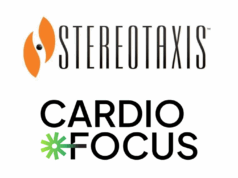
Yoram Rudy, Fred Saigh distinguished professor and director of the Cardiac Bioelectricity and Arrhythmia Center at Washington University in St Louis, St Louis, USA, talked to Cardiac Rhythm News about the novel imaging technique, electrocardiographic imaging, which was developed in his laboratory.
What are the limitations of traditional non-invasive ECG imaging?
The traditional non-invasive method for obtaining information on the electrical activity of the heart has been the ECG. The 12-lead ECG and its extension to many more body surface electrodes (so called Body Surface Potential Mapping, or BSPM) have a major limitation in that they provide electrical signals on the body surface, far away from the heart. While these signals reflect remotely the heart’s electrical activity, they do so with very low resolution due to the effects of distance and the electrical properties of the intervening medium (eg, the lungs). Importantly, because the ECG at a given body surface electrode reflects the electrical activity in the entire heart, geometrical properties in the heart (eg, the origin of an arrhythmia) are not preserved in the body surface ECG. This prevents determination of local cardiac electrical activity with acceptable accuracy and resolution, and this limitation necessitated the use of invasive cardiac mapping approaches using catheters to obtain the necessary information for precise diagnosis and treatment.
What is electrocardiographic imaging?
Electrocardiographic imaging (ECGI; also called electrocardiographic mapping, ECM) is a new imaging modality that provides, non-invasively, the electrical information on the epicardial surface of the heart. In other words, ECGI provides the same information (or its close approximation) that could be obtained invasively with a multi-electrode sock placed over the heart, but without the need to open the chest.
A true non-invasive imaging modality records information in a non-invasive fashion, and then uses this information to reconstruct computationally information on an internal organ. For example, CT and MRI reconstruct the anatomy of the heart from non-invasively recorded data.
ECGI is similar in concept; it is a functional (rather than anatomical) imaging modality that reconstructs the epicardial electrical information (epicardial potentials, electrograms, activation maps, and repolarisation patterns) non-invasively, in a single beat.
The data that are used in ECGI are simultaneous ECG recordings from 250 electrodes that cover the torso surface (anterior and posterior) and a CT scan that provides the 250 electrode positions and the heart-surface geometry in the same frame of reference. The ECGI algorithms combine the electrical information (250 ECGs) with the CT-derived heart-torso geometry information to generate the electrophysiological data on the epicardial surface of the heart.
Compared with traditional non-invasive ECG imaging, what are the potential advantages of electrocardiographic imaging?
Compared to the traditional non-invasive 12-lead ECG, ECGI can obtain local information on the surface of the heart with high resolution. As we have shown in published studies,1,2 it can locate focal arrhythmic initiation sites (in atria or ventricle) with the accuracy of about 6mm. ECGI has mapped the functional properties of the electrical substrate of ischaemic3 and non-ischaemic4 cardiomyopathy (lines of block and regions of slow conduction), and of myocardial infarction scars5 (low voltages, fractionated electrograms, late potentials).
In ventricular tachycardia and atrial fibrillation,2 ECGI was able to map the sequence of epicardial activation for re-entrant and focal mechanisms. It could also determine whether the initiation site of ventricular tachycardia is epicardial or intramural (endocardial).
The ability to map the activation sequence during a single beat is advantageous, making it possible to map dynamically changing polymorphic arrhythmias or arrhythmias that are not sustained or haemodynamically unstable.
How does electrocardiographic imaging overcome the difficulties of traditional non-invasive imaging?
Traditional non-invasive imaging methods such as CT or MRI do not image the electrophysiology of the heart; they image its anatomy. ECGI is a functional imaging modality, designed to provide images (maps) of cardiac electrical activity and arrhythmias. In a recent study,5 we compared the electrophysiological substrate of a post-infarction scar imaged with ECGI, with MRI images of the anatomical scar in the same patients, showing a very close agreement.
What is the evidence base for electrocardiographic imaging?
ECGI in my laboratory is used for research, with the emphasis being on the study of arrhythmia mechanisms in patients. We validated ECGI extensively by comparison to direct epicardial mapping in animal experiments and intraoperative mapping in patients undergoing cardiac surgery. We also compared the non-invasive ECGI findings to invasive catheter-based EP studies and ablation results.
What are the potential limitations of this type of imaging?
The main limitation of ECGI is that similar to direct epicardial mapping, it images the epicardium, but does not reconstruct endocardial or intramural events (except through their reflections in the epicardial potentials and epicardial electrograms). The methodology of reconstructing epicardial potentials and electrograms does not require any a priori assumptions about the electrical activity of the heart and is therefore suitable for clinical applications, where the electrical state of the heart is not known in detail and is modified by complex pathological changes.
Approaches to reconstruct endocardial or intramural potentials require a priori assumptions and knowledge (eg which regions of the heart are electrically active at a given instant, distribution of viable myocardium within a scar, or shape and properties of the action potentials in a given heart with certain pathology). Such knowledge is rarely available in the clinic, and imposing incorrect assumptions can bias the reconstruction.
Therefore, we limit our ECGI approach to epicardial reconstruction. As we have shown in animal experiments6,7 and patient studies,1 much can be deduced about intramural and endocardial activation from the epicardial potential maps and electrograms morphology.
What studies are currently being done on this?
In my laboratory we presently use ECGI to study the human electrophysiology of various hereditary disorders (Long QT, Brugada, and early repolarisation syndromes), the short- and long-term effects of cardiac resynchronisation therapy, risk stratification for ventricular tachycardia in patients post myocardial infarction, and the mechanisms of persistent atrial fibrillation. The clinical ECGI system is currently being used in clinical studies in several institutions in Europe and the USA. The first commercially available ECGI system (the ECVUE system, CardioInsight Technologies) has recently been installed in hospitals in the UK and Germany.
Yoram Rudy co-chairs the scientific advisory board of and holds equity in CardioInsight Technologies (CIT), which does not support any research conducted by him.
For more information about ECGI click here
References
1. Wang Y, et al. Sci Transl Med 2011; 3: 98ra84
2. Cuculich PS, et al. Circulation 2010; 122:1364–72
3. Jia P, et al. Heart Rhythm Journal 2006; 3: 296–310
4. Ghosh S, et al. Heart Rhythm 2011; 8:692–99
5. Cuculich, et al. J Am Coll Cardiol 2011; 58: 1893–902
6. Oster HS, et al. Circulation 1998; 97:1496–1507
7. Burnes JE, et al B. J Amer College Cardiol 2001; 38:2071–78









